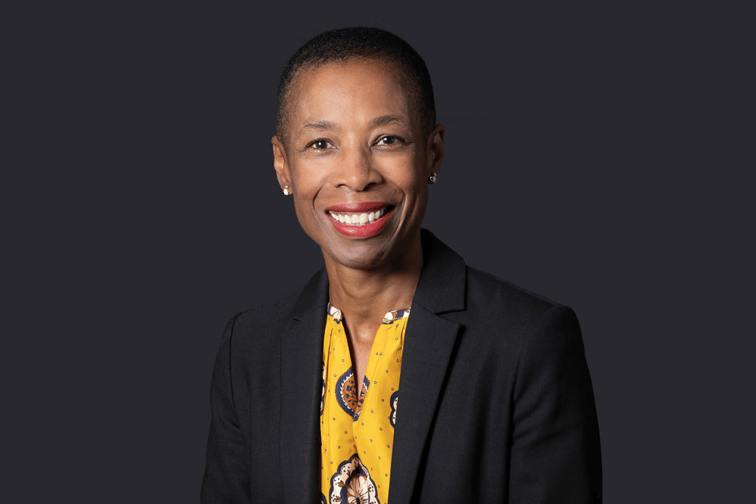

Advocates of efforts to improve equity, diversity and inclusion (EDI) in the insurance sector heard a rallying cry in Amanda Blanc’s comments at the Association of British Insurers (ABI)’s ‘Diversity Equity and Inclusion Summit’ where the Aviva CEO noted that, “if our progress gets any slower, we will start to go backwards”.
Identifying weak spots in the sector’s progress on improving the gender diversity of boards, Blanc highlighted the minimal increase in the representation of women in senior management roles in financial services. Her message is a call to arms for increased representation across every arena of financial services, but some sectors do appear to be faring better than others – while others are trailing behind.
Lending her insights into how the insurance law sector is progressing when it comes to such initiatives, Bridget Tatham (pictured), chair of the Forum of Insurance Lawyers (FOIL)’s Diversity & Inclusion Group and partner at Browne Jacobson, noted that insurance legal practices are not ‘exempt’ from traditional cultural obstacles that have hindered the pace of change.
“It is unsurprising that the SRA [Solicitors Regulation Authority] in the updated April 2022 report ‘How diverse is the legal profession’ opens with the statement that there is a “slow but steady increase in diversity among all lawyers since the last survey in 2019”,” she said. “And slow it is.
“Unlike the insurance industry, the insurance legal market lacks sector-wide data to truly understand what interventions are working, which are failing, why, and what success looks like. We are all very protective of our data. Just think what an industry analysis of Gender and Ethnicity Pay Gap data would really tell us about what impact EDI policies and initiatives are having in the insurance sector.”
Insurance and law have in common that they are two sectors traditionally seen as somewhat resistant to change. Addressing whether this reputation is well-deserved, Tatham noted that the Chartered Insurance Institute (the CII) – which requires an EDI policy from Corporate Chartered Firms - surveyed members in 2021 and found that 45% of respondents thought that the main aim of a D&I programme was to improve workplace culture.
“While an outcome of EDI interventions is improved workplace behaviours and improved culture, that is not the main driver for change,” she said. “EDI has to be aimed at organisational and structural change. That said, I do believe that the insurance market, which is data and results-driven is rightly asking its partners and those who want to do business with it, to reflect their stated values and aims which is to be a diverse and inclusive profession.
“As such, law firms, have to move with the times and evidence the positive impact that EDI interventions are having on who is in the business, what work they’re doing and who is sat in the senior leadership. So, we are moving in the right direction.”
Looking at the movement currently being made in the insurance legal sector, Tatham highlighted that there is a lot of activity and some fantastic initiatives undertaken by a lot of firms. However, the SRA data tells us that as a profession there is much more to do, she said, and the question remains - are the initiatives we hear about really affecting impactful change?
“We need a degree of industry openness to secure data and metrics with a survey of insurance law practitioners and staff at all stages of their career pathways,” she said. “Data not only tells us what is actually happening but also what is and is not working. Without sector-wide data, it is difficult to provide a ‘state of the nation’ answer.”
The SRA data on senior positions in law firms tells us that there is so much more to do, Tatham said. From a gender perspective, female lawyers make up 61% of the profession but only 35% of partnerships.
She noted that ethnicity data does not fare much better. Following the global outcry in the aftermath of George Floyd’s murder and the flurry of anti-racism statements and training, the proportion of Black lawyers in the profession remained static at 3%. The recent ‘Extense’ report found that only 1% of Black lawyers are partners in law firms with 10 or more partners. Meanwhile, disabled lawyers make up only 5% of lawyers compared to 14% of the workforce.
“[With] 58% of lawyers from a professional background and 58% holding senior roles it is perhaps not surprising that change is slow,” she said. “But data shines a light and holds the profession to account.”
Delving into what can be done to ensure that diverse talent not only joins the insurance legal profession but is also retained, Tatham highlighted the strategies that can be utilised to bring on board diverse talent including blind CVs and mixed interview panels. But, she said, nothing beats EVP [Employee Value Propositions] where your brand tells those looking for work what your firm’s values are.
Retention comes from inclusive policies such as work allocation, and inclusive behaviours being measured and rewarded at leadership and all levels, she said. While mentoring goes some way to supporting and guiding those on their career path, sponsorship is invaluable. And the right sponsorship means acting to bring someone up behind you, by speaking on their behalf when they are not in the room and amplifying their accomplishments and talents.
What are your thoughts on the importance of D&I initiatives? Please feel free to share your comments below.
